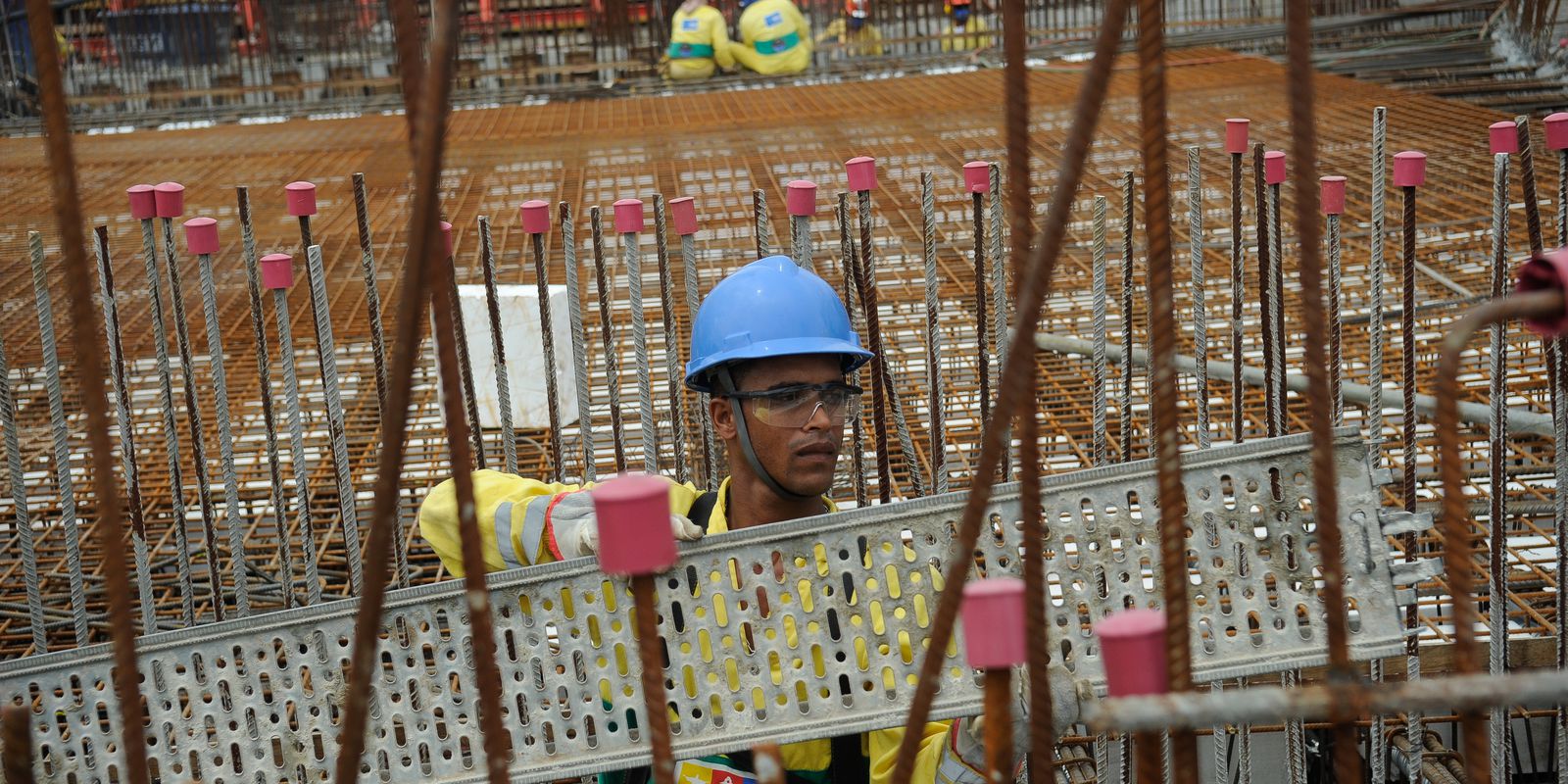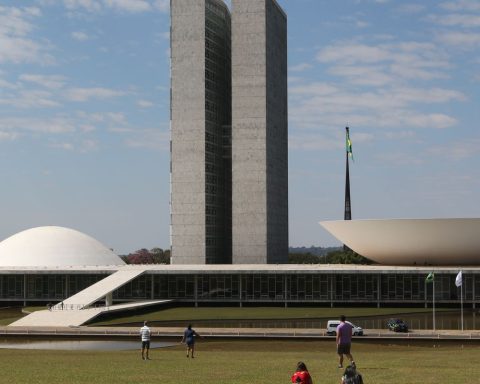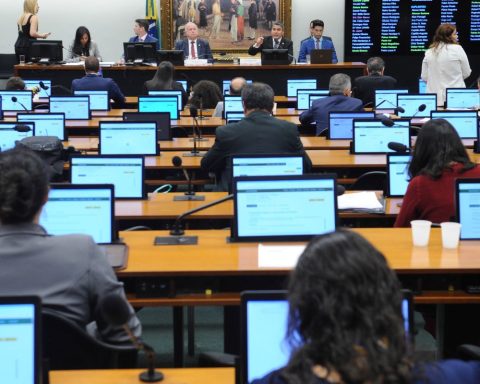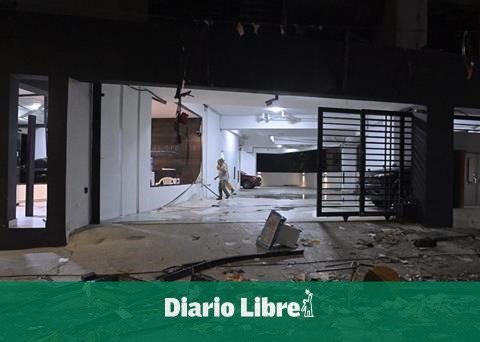In its thirtieth edition, released today (15) by the Brazilian Institute of Geography and Statistics (IBGE), the Annual Survey of the Construction Industry (Paic) reveals that, in 2020, the first year of the new coronavirus pandemic, the construction sector involved a total of 131.8 thousand active companies that employed 2 million people, to which R$ 58.7 billion were paid in salaries, withdrawals and other remuneration.
R$ 325.1 billion in value of incorporations, works or construction services were generated that year. The survey indicates that the results of the value of incorporations, works or construction services totaled R$ 147.3 billion for the Building Construction segment; R$106.4 billion for Infrastructure Works; and R$71.4 billion for specialized services for construction.
According to data collected by the IBGE, there has been a structural change in the construction sector in the last ten years: the segment with the highest participation in value of developments, works or construction services in 2011, which was infrastructure works, which fell from 41.7% to 32.7% of the total in 2020. On the other hand, the building construction segment had its share increased from 39.9% to 45.3% in the period. Likewise, the segment of specialized services for construction increased its share from 18.5% to 22.0%, from 2011 to 2020. In the researched decade, the formal construction sector started to be characterized by smaller companies and paying lower wages.
In the first year of the new coronavirus pandemic, the gross value added of construction fell by 6.3% compared to the previous year, according to the IBGE’s System of National Accounts (SCN). Also in 2020, the Gross Domestic Product (GDP, the sum of all goods and services produced in the country) fell by 0.9% in volume, as a result of the impacts produced by the pandemic on the economy as a whole. Likewise, industrial physical production of typical civil construction inputs faced a 0.2% retraction in 2020, with the sharpest drop in the first months of that year, reveals the SCN.
Private sector
Paic shows that, in 2020, the private sector had its largest share of the decade, accounting for 70.2% of the value of construction works or services, against 61.5% in 2011. According to the IBGE, the increase was influenced , mainly by the segment of building construction and specialized services for construction, in which the participation of the private sector reached 82% and 79.4%, respectively, in 2020, against 75.6% and 78%, in 2011.
In the infrastructure works segment, which historically has its main contractor in the public sector, the value of construction works or services was shared with the private sphere. As a result, the public sector’s share declined by 7.9 percentage points in ten years, falling from 57.9% in 2011 to 50% in 2020, while the private sector increased its share from 42.1% to 50%. Also according to PAIC, the participation of the public sector as a demander of construction works or services fell by 8.7 percentage points (pp) in the period from 2011 to 2020.
The group of the eight largest construction companies reduced the value, falling from 11% of the sector’s total, in 2011, to 4.8%, in 2020, a drop of 6.2 percentage points. By segments, there was a drop in the value of building construction companies, from 8.7% to 7% in the decade, and in the infrastructure works segment, from 25.3% in 2011 to 10% in 2020 (a drop of 15.3 pp). In the opposite direction, the segment of specialized services for construction showed an expansion of concentration, rising from 4.7%, in 2011, to 7.2%, in 2020.
Job
Paic 2020 shows a reduction in the number of employed people from 2.7 million in 2011 to 2 million in 2020. This meant the loss of 680,700 jobs. Although this drop occurred in the three segments of construction, the highlight was the construction of buildings, which accounted for 46.1% of the registered retraction. In terms of distribution of employed personnel, construction of buildings remained the main employer segment, with a 35.3% share in 2020, followed by specialized services for construction, with 33%, and infrastructure works, with 31.8%. %.
The IBGE survey records that, between 2019 and 2020, the volume of employment in the construction industry increased by 71,800 people. The segment that contributed the most to this result was infrastructure works, which employed 61,600 more people in the period, followed by construction of buildings, with 32,700 more people. On the other hand, the segment of specialized services for construction showed a drop of 22.5 thousand people in this period.
From the point of view of formal employment, the survey found that the impacts of the new coronavirus pandemic could not configure a negative result for the construction sector in 2020, compared to the previous year. The infrastructure works segment, in particular, was already resuming the pace of activities and did not face serious supply problems in terms of construction materials in the first year of the pandemic. Added to this is the larger size of the companies, which would have represented “greater stability of formal employment relationships in 2020 compared to 2019”. The survey also highlighted that the various federal, state and municipal decrees included construction in the list of essential activities, which allowed the continuity of works during the pandemic.
The survey shows that, in 2020, compared to 2019, there was an increase of 3.8% in the number of employed persons. On the other hand, salaries, withdrawals and other remuneration paid were increased by only 0.2%, which signals real stability. This means that even in a year of the covid-19 pandemic, the construction sector showed relative stability in the amount of salaries, withdrawals and other remuneration.
Costs and expenses
Considering the total number of employed persons divided by the number of companies, there was a drop in occupation from 28 to 15 persons, between 2011 and 2020. This trend was observed in the three segments, highlighting infrastructure works, which employed 98 persons, on average , in 2011, and became 45th in 2020. The average remuneration, measured in minimum wage (sm), has also been reduced in the last ten years, from 2.6 sm to 2.2 sm
Regarding the costs and expenses of the construction industry, it was found that personnel expenses continued to lead, with growth from 46.4% in 2011 to 49.3% in 2020, while consumption of materials fell from 37, 9% to 35.9%; and works and services contracted to third parties decreased from 15.6% to 14.8%.
Compared to the last decade, residential works continued to be the main construction product, with a 24.9% share in the total, an expansion of 2.7 pp in ten years. In second place, there are specialized services for construction, with an additional 3 pp of participation. The biggest increase in the period between 2011 and 2020 came from the group of infrastructure works for electricity, telecommunications, water, sewage and pipeline transport, which rose from a share of 11.5% in 2011 to 14.7%, in 2020. The IBGE highlighted that in the relationship between 2019 and 2020, this group experienced a drop of 0.5 percentage point. The biggest reduction, however, was observed in the group of industrial, commercial and other non-residential buildings, which went from 14.9% to 10.6%.
By regions
The analysis by region reveals that there were no major changes in terms of both the number of employed persons and the value of developments, works or construction services for companies with 5 or more persons. In both variables, the Southeast was the highlight. In terms of employment, the region increased its share of employed persons from 47.6% to 49.7%. Despite the drop from 51.9% to 48.5% in the last ten years in the value of developments, works or construction services, the Brazilian Southeast remained in the leadership of the ranking in the country.
According to Paic 2020, the South Region has shown a growth trend in the last ten years, increasing participation both in the value of developments, construction works and services, and in employed persons. The Northeast, on the other hand, was the region that lost the most participation, in terms of employed persons, in the decade (from 24% to 19.2%).
















